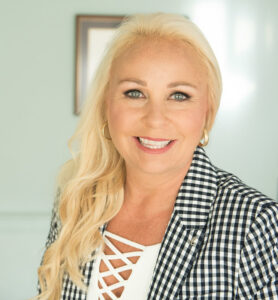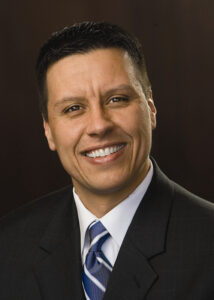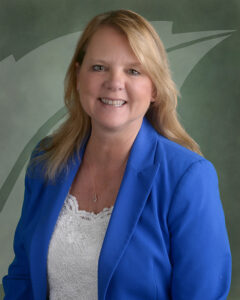How CNY’s top nonprofits have been doing since the pandemic?
By Deborah Jeanne Sergeant
Nonprofit organizations rely on donations, grants and volunteers to operate. We recently spoke with three of the area’s leading nonprofit organizations to see how things have been going since the pandemic.
 Loretto Health and Rehabilitation Center
Loretto Health and Rehabilitation Center
Kimberly Townsend, president and CEO
Oswego County Business Magazine: Are you finding staff readily?
KT: Staffing was a challenge prior to COVID-19, but it is getting better. But that’s also due to our own investment in our paid training programs and our focus on developing career pathways to continue to develop Loretto team members. For example, in 2023 our certified home health aide training program has added 173 employees to our Loretto workforce and our certified nurse aide training program has resulted in 110 people joining Loretto as licensed CNAs. We have also had 34 Loretto employees graduate from the licensed practical nurse program, which allows them to grow their career while at Loretto.
OCBM: Are people returning to volunteering since COVID-19? How has that affected your operations?
KT: Volunteers are returning, albeit slowly. This could be due to hesitancy post-COVID-19, but people are delaying retirement, so fewer people are available to volunteer. We also haven’t been as focused on proactively recruiting volunteers as much as we’d like to be as we navigate our other staffing priorities. We continue to welcome volunteers and have opportunities across our system for anyone interested.
OCBM: Are you at the funding level you need to be?
KT: Our industry continues to be woefully behind in funding for programs such as Medicaid and we’ve continued to advocate for significant change to the reimbursement rates to raise them to cover the critical costs of care. As a nonprofit provider that is predominantly 70% Medicaid funded, this has to change to continue to be viable and I believe we will start to see providers closing if this doesn’t improve.
OCBM: What has changed about your mission?
KT: If anything, our focus on mission is stronger than ever. Our mission is to be a family of exceptional people caring for and about each other, and each day we aspire to be the best place to live with purpose, wholeness and dignity. It’s what grounded us and kept us going during some of the toughest times we’ve ever experienced.
 St. Joseph’s Health
St. Joseph’s Health
Vincent Kuss, vice president of St. Joseph’s Health Foundation
OCBM: Are you finding staff readily?
VK: From a fundraising perspective, as with any hospital in the country we have a nurse shortage. We have implemented a campaign on behalf of the college of nursing that just celebrated its 125th anniversary. The campaign is looking to recruit prospective students for the College of Nursing. We raised $1.25 million to support the future of nursing, including $800,000 in four months. These dollars will bolster full and partial scholarship support.
OCBM: Are people returning to volunteering since COVID-19? How has that affected your operations?
VK: As a result of the pandemic, we’ve seen a rise in the donors who volunteer. It’s made people more aware of issues related to illness. We’ve seen our St. Joseph’s Health volunteers more. It’s nice to see people more comfortable at in-person events.
OCBM: Are you at the funding level you need to be?
VK: Our revenue has increased since the pandemic. Donors have remained committed to philanthropy and most have maintained or increased donations. Many who gave consistently over the years gave more during the pandemic. A lot of the individuals were made aware of community needs. Donors were very empathetic to healthcare providers and even now, with the shortage of nurses. During the pandemic we saw PPE, food and monetary donations. We did a campaign where we renovated several breakrooms. We have massage chairs and resources for staff who were overwhelmed from working so much. Donors were certainly sympathetic. With the colleague emergency assistance fund, we’re able to provide them with a grant so that they can move on. If a spouse lost a job during the pandemic or they have an unexpected death, these funds can help. A lot of donors are sympathetic to those needs as well.
OCBM: What has changed about your mission?
VK: What we did is go back to our mission. We always maintained the mission, but we’re stressing more what St. Joseph’s is all about. We’re keeping with our values in all that we do. It’s something we bring up at all of our events: try to take care of the greater Central New York community which is our mission and will continue to be so.
 Nascentia Health
Nascentia Health
June Castle, CFO of Nascentia Health
OCBM: Are you finding staff readily?
JC: With two local agencies closing, we were able to “capture” some of those clinicians. Home health aides were a limited resource. It was unfortunate that these agencies closed, but we can increase our staff overall. We’re still short of home health aides and nurses. We lost 50% of our home health aides during the pandemic and we haven’t recovered on that. It was family issues, they found jobs in other industries or they wanted to stay home. That job title was impacted the most. We’re trying to get folks in as home health aides on their journey through whatever healthcare profession they’re pursuing like nursing. We’ve partnered with other organizations trying to increase awareness. We’re doing tons of recruiting, trying to have events where we do on-the-spot interviews.
OCBM: Are people returning to volunteering since COVID-19? How has that affected your operations?
JC: We’re in the process branching into a different area with hospice. That’s where volunteerism is important, as 5% of the hours must be filled by a volunteer. We’ve had volunteers through the years, but as we’re building up to get ready to venture into this new area, we’ll really rely upon them. You don’t see volunteering among young people as much anymore; unless it’s an organization or college that’s service based. The majority of the people who do the volunteering are retirees.
OCBM: Are you at the funding level you need to be?
JC: My experience has been that people during COVID-19 and directly post-COVID-19 were more generous because of the challenges faced during that time as a nonprofit agency offering care. We write grants as the day is long to try to support the things we do. Our foundation takes donations and turns them into a better life for our patients.
OCBM: What has changed about your mission?
JC: Nascentia Health as a nonprofit organization, we’re always working with our community partners so no matter what our programs, it’s to help our community and better the healthcare resources available. Homecare is to help the capacity of the hospitals. We can help patients who are in the hospital to receive care at home as appropriate. We support our other community partners. If the hospital is full, the patients are in the hallway or have to be transferred somewhere else. We view our role as a community partner with other providers and community-based organizations.


